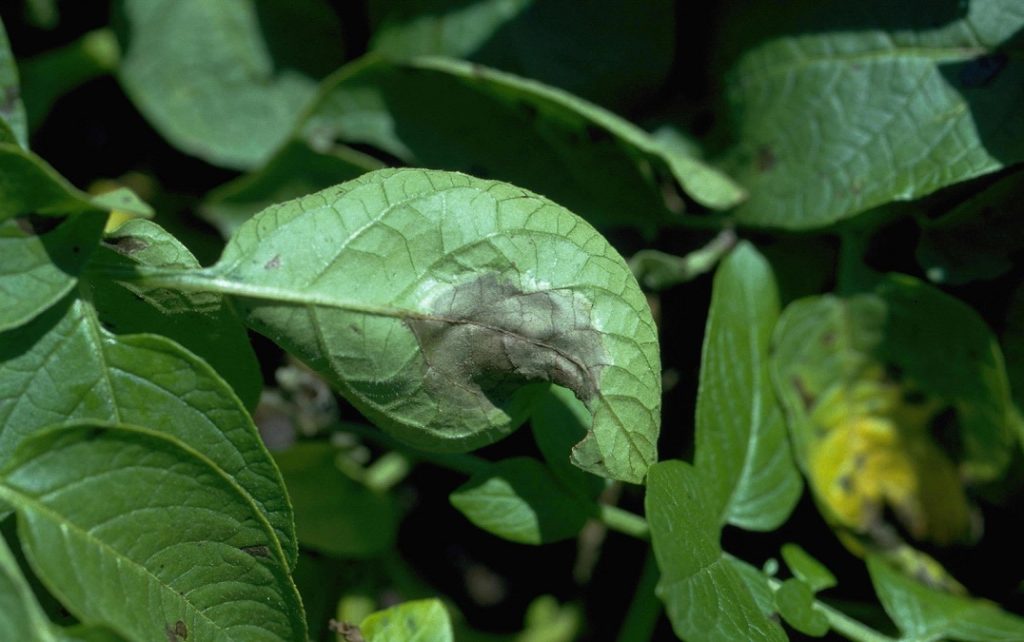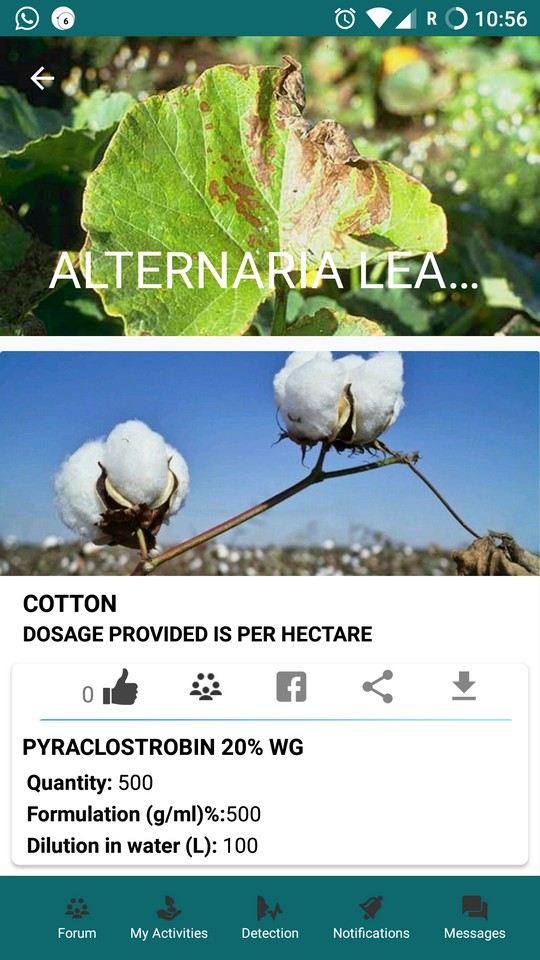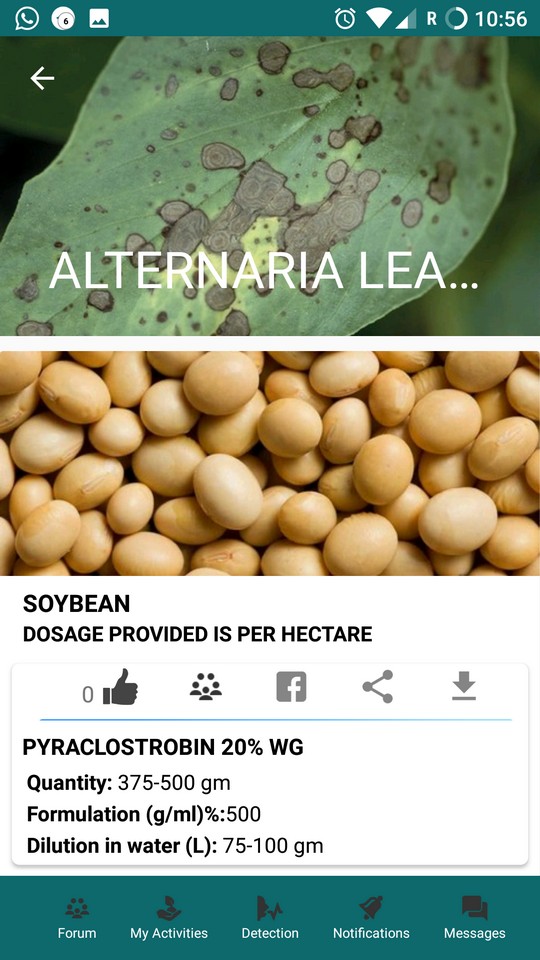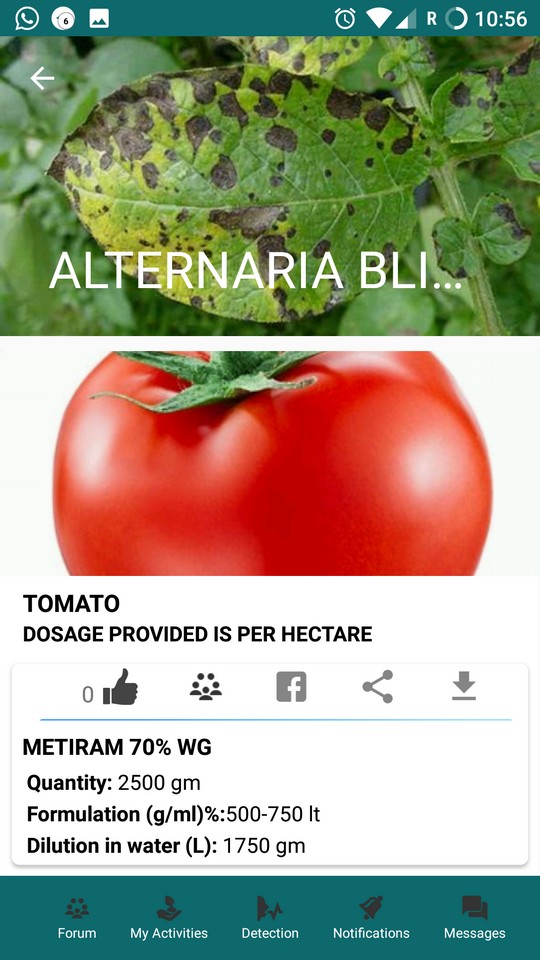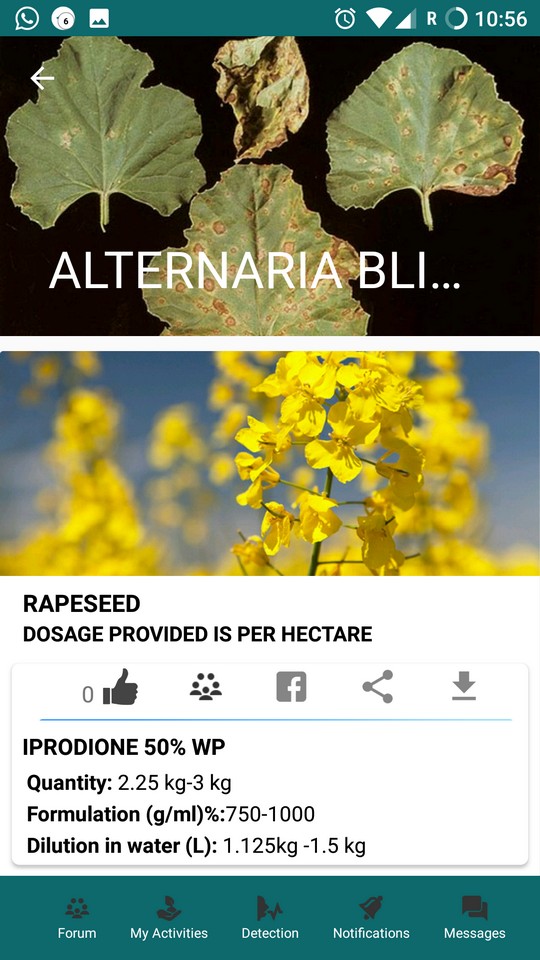Alternaria Blight
Black lesions are also present on leaves. Leaves can wither and fall on severe infestation. Minute brown or black spots can appear on immature fruits. The spots are about 3 mm in diameter and are surrounded by a red tint on mature fruits. This infection reduces the quality of the produce.
The symptoms arise are due to a group of three different fungi of alternaria. During favorable conditions, they come out of hibernation from the soil and produce spores that are carried by the rain or wind. Nutrient deficiency, high humidity, high temperatures, dew formation and sunny days are some of the important factors that are responsible for the development of alternaria.
Some of the characteristics of alternaria can be confused with that of Botryosphaeria dothidea. Rub the leaves to tell if the late blight is caused by alternaria alternata or not.
Biological Remedies
Apply a paste of garlic on the leaves and fruits for biological control . You can also use solutions based on Bacillus subtilis which is found to be lethal to fungus. One should always start treatment against this disease before the fruits get ripened in the early summer.
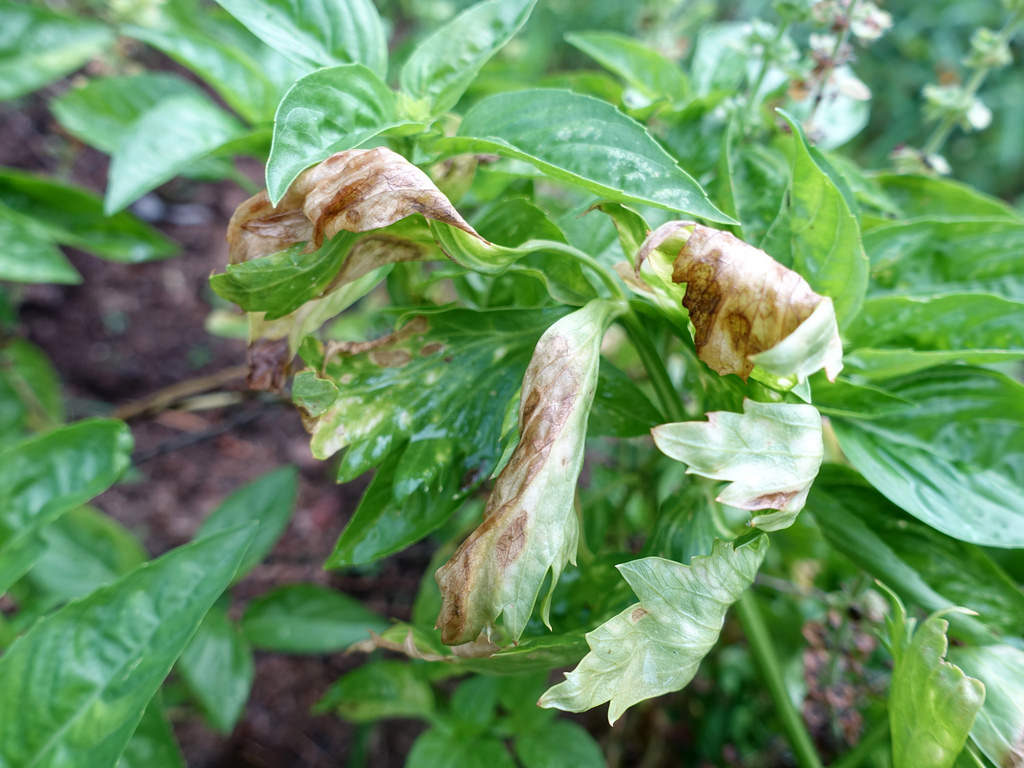
Chemical Methods of Control
Product enriched with entities such as copper, maneb, thiophanate-methyl are found to be effective in curing alternaria. The timing of the application of the treatment, age of the tree, and the quantity of the dose determine the effectiveness of the treatment.
To promote aeration of plantation, one must not plant the trees closely. Proper care should be taken to remove weeds from the field. As soon as the first symptoms are visible, one must cut the affected parts and burn them. At the time of infancy, prune the trees to get fully aerated fields.
During fruit ripening, one must not irrigate the fields using sprinklers. Once the crop is cut from the field, destroy the remaining harvest by burning it. Above all try not to compost parts of these plants as they may carry over this disease to another season.
We will keep posting about any such informative information on to our blogs, to help as many people as possible. Farmonaut is built upon a vision to bridge the technological gap between farmers and strives to bring state-of-the-art technologies in the hands of each and every farmer. For any queries/suggestions, please contact us at [email protected].
We have some more interesting articles coming up soon. Stay tuned!
Wait!!
Before that…
Follow us at:
Facebook: https://facebook.com/farmonaut
Instagram: https://instagram.com/farmonaut
Twitter: https://twitter.com/farmonaut
LinkedIn: https://www.linkedin.com/company/farmonaut/
Pinterest: https://in.pinterest.com/farmonaut/
Tumblr: https://farmonaut.tumblr.com/
Youtube: https://www.youtube.com/channel/UCYWOOPPKATLgh4L6YRlYFOQ
AppLink: https://play.google.com/store/apps/details?id=com.farmonaut.android
Website: https://farmonaut.com
Satellite Imagery: https://farmonaut.com/satellite-imagery
Satellite Imagery Samples: https://farmonaut.com/satellite-imagery-samples


